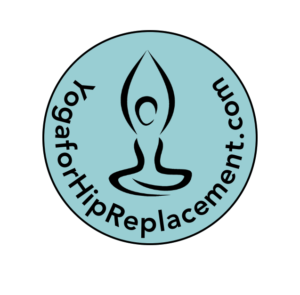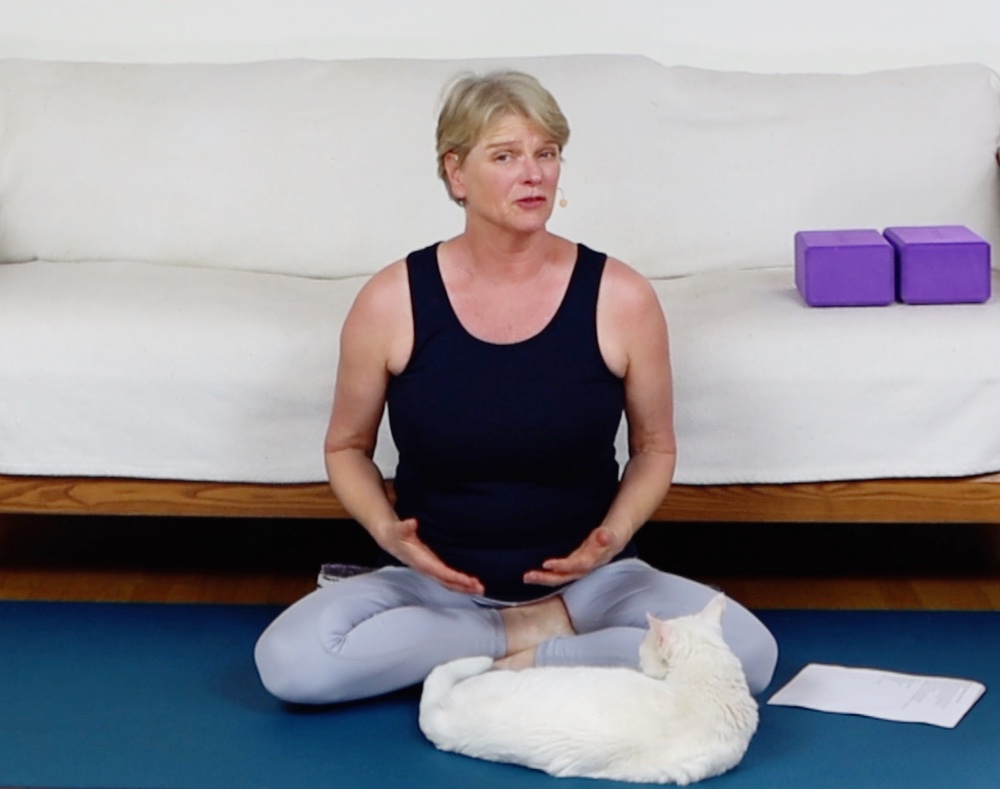Yoga for the health and safety of Total Hip Replacement
“I’m incredibly impressed by your dedication and creativity …. [Yoga for Hip Replacement] is a wonderful resource for any patient looking to get back to an active and healthy lifestyle!”– Dr. Navin Fernando, MD, FRCS(C), Associate Professor, Adult Joint Reconstruction, Dept. of Orthopedic Surgery and Sports Medicine, University of Washington
Elizabeth’s decades of teaching experience has created an oasis of healing for those preparing for or recovering from hip replacement surgery … I highly recommend anyone seeking a specific understanding of how to use yoga for healthy hips, to take advantage of Elizabeth’s website for a trove of enlightened teaching. – Kathryn Payn
“Yoga for Hip Replacement is an invaluable resource for anyone pre- or post-hip replacement … with concise videos that are easy to follow and support you on your path to recovery.” – Kelly Straight, Straight on Strength, LLC, Certified Personal Trainer, Athletics, Rehab
New to Yoga?
Yoga for Hip Replacement (YHR) offers easy to understand instruction to keep you strong and mobile, and to help you return to your daily activities.
Already a Yogi?
This site offers appropriate modifications and guidelines that will inform your yoga practice before and after surgery.
You will learn
- Alignment in postures for joint safety and longevity.
- Strength and how it provides stability for the new joint.
- Flexibility and how to approach it with strength.
- Breath awareness and its calming effects on the nervous system.
- Intentional Relaxation to promote healing, manage pain, and cope with stress.
Research-based studies confirm
that yoga offers both physical and mental health benefits including faster healing times, reduced postoperative hospital stays, and improved pain management.
Wondering if it is ok to do yoga after Total Hip Replacement?
- Learn how to safely practice poses with Yoga Basics
Feeling out of shape and less able to do the things you love?
- Build strength, maintain flexibility with Standing Poses
Stressed out and tired of dealing with the pain?
- Promote healing and build resiliency to stress and pain with Restorative Poses
Want to keep moving?
- Get a whole-body experience that targets hip health and safety with Practice Classes
Get answers to common yoga and Total Hip Replacement questions.
- Read the Blog
All Membership Levels come with
– a 30-minute free consult with Elizabeth
– unlimited email access to get your questions answered
– unlimited access to Yoga Basics, Standing Poses, Restorative Poses, and Practice classes
– convert to Lifetime Unlimited Access after 12 months.
– Questions? Contact us . We are happy to answer any questions.

From the blog
Leg Strength — Crucial for Total Hip Replacement AND for brain health!
Open-hip standing poses offer a range of benefits for total hip replacement. Turns out that all the beautiful standing poses we do in yoga not only promote total hip replacement health and safety, they also build brain health. What studies reveal about strength and...
Downward Facing Dog and Total Hip Replacement
Downward Facing Dog has many benefits Its triangular structure makes it a very stable pose. When you find just the right balance and alignment, your sense of time will slip away while you enjoy the benefits of this semi-inversion. Strengthens shoulders, arms, wrists,...
Pigeon Pose after Total Hip Replacement
Pigeon pose, like any other pose, can be safely practiced following total hip replacement if you approach it slowly, remain focused, and modify the pose as needed. Keep in mind that there are several variations of pigeon pose Before practicing Pigeon Pose following...
Cultivate the Beginner’s Mind: Slow down, be curious, start small.
Beginner's Mind for Total Hip Replacement Picture a baby as it takes in its brand new world. It has no conditioning to distort the wonder and newness around it. For total hip replacement, adopting a beginner’s mind, as though you were coming to yoga for the first...
Vagus Nerve and Total Hip Replacement
Why would I want to mention the vagus nerve and total hip replacement in the same sentence? Because the vagus nerve is key to helping us heal and to deal with pain and stress. What is the Vagus Nerve? The vagus nerve controls bodily functions like mood, immune...
Hip Flexor Pain and Back Pain Related to Total Hip Replacement
Some form of hip flexor pain and/or back pain with total hip replacement seems to be a common experience among those of us with THR. I frequently get questions about it from students and I have read accounts from others with THR. I remembered that several weeks after...
Benefits of Bare Feet
When you are preparing for or recovering from total hip replacement surgery you need increased stability to support your new joint. The whole-body benefits of an asana practice begin with the feet, and the way you connect with the earth will have a ripple effect...
Benefits of Balancing for Total Hip Replacement and Beyond
When you balance, whether on two feet, or on your head, you are strengthening muscles essential for the stability of total hip replacement. Balancing challenges your ability to focus, to react to fluctuations in your body, and to maintain your center of gravity. It is...
Open-Hip Standing Poses = Strength, Stability, Flexibility!
Open-hip standing poses offer a range of benefits for total hip replacement. – They can be modified for any level of ability so that you can practice them at any stage of your THR journey. – They build strength. – They provide stability for your hips. – They promote...
Breathe and Heal: How Relaxing Pranayama helps with Total Hip Replacement
We can use our breath (pranayama) to promote relaxation and healing as we go through Total Hip Replacement preparation and surgery. Breathing is an involuntary action of the autonomic nervous system;* it happens whether we are thinking about it or not. But breathing...

Elizabeth Freeman (500 E-RYT, YACEP) has practiced yoga since 1985 and has been a yoga teacher since 1997. She specializes in yoga for people with movement challenges… Read more here
sthira sukham asanam
the posture should be steady and at ease
~ The Yoga Sutras of Patañjali

